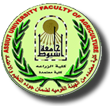The agricultural sector is one of the most important sectors concerned with self-sufficiency in agricultural crops and food security, but these crops are threatened by many pests that cause severe infestation and decrease productivity. Pesticides play a vital role in pest control in that they are a quick and effective tool for reducing the severity of pest infestations. However, because of irresponsible and unwise use of pesticides, this led to an increase in pesticide residues in environmental components to the point that they became toxic to the environment and living organisms. Residual pesticides have the potential to stay at the application site longer due to their persistence. The current trend is to eliminate these residues through cost-effective, sustainable, economic, and ecologically friendly means. Among these techniques, using aquatic plants to eliminate pesticides and their harmful effects is one of the most significant. Multiple matrices have been subjected to remediation procedures classified as biological, chemical, physical, and physicochemical, which aim to eliminate organic and inorganic contaminants. Biological remediation, which comprises phytoremediation and bioremediation, has been used to clean up contaminated areas because of its low-cost energy efficiency and environmental friendliness.
Research Abstract
Research Date
Research Department
Research Journal
The Handbook of Environmental Chemistry
Research Member
Research Publisher
Springer
Research Rank
International
Research Website
https://link.springer.com/chapter/10.1007/698_2024_1191
Research Year
2025
Research Pages
1-27
 Do you have any questions?
Do you have any questions? 
